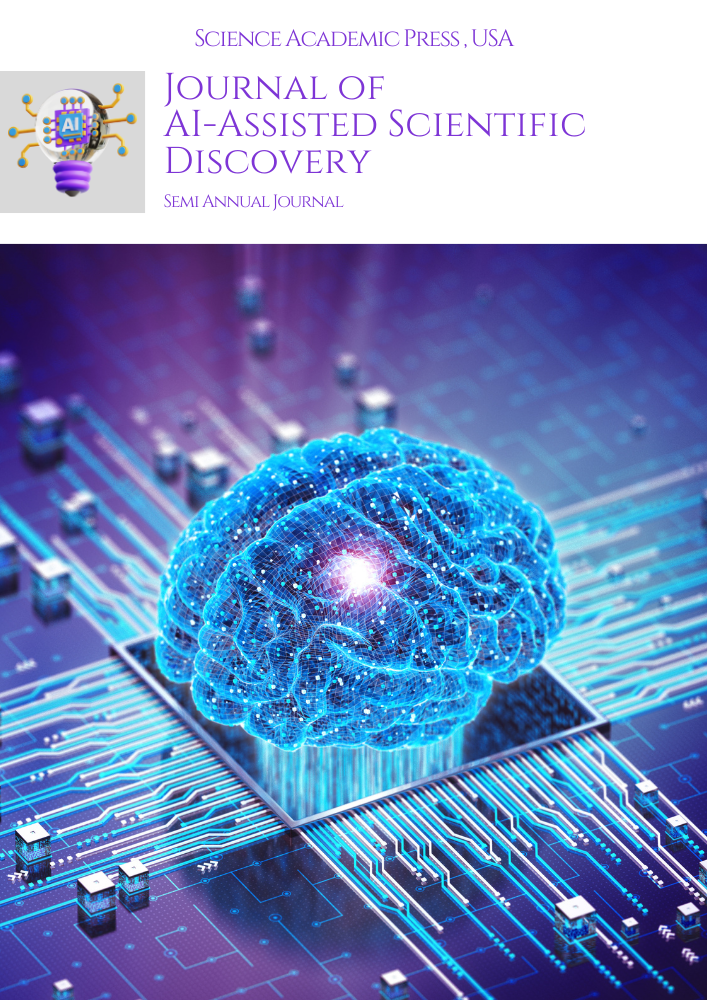Published 04-01-2021
Keywords
- artificial intelligence,
- prejudice,
- algorithmic fairness,
- ethical AI

This work is licensed under a Creative Commons Attribution-NonCommercial-ShareAlike 4.0 International License.
Abstract
This essay discusses the intricate and multifaceted problem of algorithmic bias in artificial intelligence (AI) systems, and emphasizes its human rights, social, and ethical implications. As AI technologies become increasingly embedded in high-stakes areas of medicine, finance, employment, law enforcement, and social services, risks of discriminatory decision-making remain on the rise. Algorithmic bias may perpetuate existing social biases, adversely affect disadvantaged populations disproportionately, and perpetuate institutional discrimination, and thereby pose serious ethical issues.
The research endeavors to present an extensive comprehension of algorithmic bias through exploration of its cause, mechanism, and societal aspects. It exhaustively analyzes the presence of bias in AI systems, its cause-running from biased input data to defective algorithmic development, as well as the ethical aspects brought by having AI-based decisions influence real-world repercussions. In addition, the study analyzes material and immaterial effects of AI bias on persons and groups and aims at fairness, transparency, and accountability of AI in particular.
In its attempt to deal with these issues, this paper analyzes some measures to mitigate against bias, for instance, technical measures such as bias-aware algorithms, fairness-aware machine learning algorithms, and explainable AI methodologies. Furthermore, it speaks to normative and regulatory regimes that enable responsible AI deployment, as well as grass-roots strategies that enable affected communities to participate in AI stewardship. Through the use of the best of an interdisciplinary approach, the study integrates findings from peer-reviewed literature, international case studies, government policy, and industry standards to provide a comprehensive perspective on the issue.
Finally, the paper emphasizes the need for active, multi-stakeholder responses that make sure AI technologies conform to basic human rights and moral principles. In incorporating technical, ethical, legal, and social considerations into AI, the research demands more inclusive and accountable AI system that maximizes fairness, minimizes disparities, and secures human dignity in the modern fast-changing world of artificial intelligence.
Downloads
References
- Buolamwini, J., & Gebru, T. (2018). Gender Shades: Intersectional Accuracy Disparities in Commercial Gender Classification. Proceedings of Machine Learning Research, 81.
- Calo, R. (2018). Artificial intelligence policy: A primer and roadmap. In University of Bologna Law Review (Vol. 3, Issue 2). https://doi.org/10.6092/issn.2531-6133/8670
- Chawla, N. V., Bowyer, K. W., Hall, L. O., & Kegelmeyer, W. P. (2002). SMOTE: Synthetic minority over-sampling technique. Journal of Artificial Intelligence Research, 16. https://doi.org/10.1613/jair.953
- Chouldechova, A. (2017). Fair Prediction with Disparate Impact: A Study of Bias in Recidivism Prediction Instruments. Big Data, 5(2). https://doi.org/10.1089/big.2016.0047
- Crawford, K., & Schultz, J. (2013). Big data and due processes: Toward a framework to redress predictive privacy harms. In Public Law & Legal Theory Research Paper Series.
- Crawford, K., Whittaker, M., Elish, M. C., Barocas, S., Plasek, A., & Ferryman, K. (2016). The AI Now Report: The Social and Economic Implications of Artificial Intelligence Technologies in the Near-Term.
- Dixon, L., Li, J., Sorensen, J., Thain, N., & Vasserman, L. (2018). Measuring and Mitigating Unintended Bias in Text Classification. AIES 2018 - Proceedings of the 2018 AAAI/ACM Conference on AI, Ethics, and Society. https://doi.org/10.1145/3278721.3278729
- Doshi-Velez, F., & Kim, B. (2017). A Roadmap for a Rigorous Science of Interpretability. ArXiv Preprint ArXiv:1702.08608v1.
- Dwork, C., & Roth, A. (2013). The algorithmic foundations of differential privacy. Foundations and Trends in Theoretical Computer Science, 9(3–4). https://doi.org/10.1561/0400000042
- European Commission. (2020). White Paper On Artificial Intelligence - A European Approach to Excellence and Trust. Journal of Chemical Information and Modeling, June.
- Hardt, M. (2016). Equality of Opportunity in Machine Learning. Google Research Blog.
- Hardt, M., Price, E., & Srebro, N. (2016). Equality of Opportunity in Supervised Learning. Advances in Neural Information Processing Systems.
- Jobin, A., Ienca, M., & Vayena, E. (2019). The global landscape of AI ethics guidelines. Nature Machine Intelligence, 1(9). https://doi.org/10.1038/s42256-019-0088-2
- Kamiran, F., & Calders, T. (2012). Data preprocessing techniques for classification without discrimination. Knowledge and Information Systems, 33(1). https://doi.org/10.1007/s10115-011-0463-8
- Kleinberg, J., Mullainathan, S., & Raghavan, M. (2017). Inherent Trade-offs in the Fair Determination of Risk Scores. Leibniz International Proceedings in Informatics, LIPIcs, 67. https://doi.org/10.4230/LIPIcs.ITCS.2017.43
- Law, T. (2018). Review of Eubanks’ Automating Inequality: How High-Tech Tools Profile, Police, and Punish the Poor. Surveillance & Society, 16(3). https://doi.org/10.24908/ss.v16i3.12612
- McKinsey & Company. (2017). Jobs Lost, Jobs Gained: Workforce Transitions in a Time of Automation.
- Obermeyer, Z., Powers, B., Vogeli, C., & Mullainathan, S. (2019). Dissecting racial bias in an algorithm used to manage the health of populations. Science, 366(6464). https://doi.org/10.1126/science.aax2342
- Rudin, C. (2019). Stop explaining black-box machine learning models for high-stakes decisions and use interpretable models instead. Nature Machine Intelligence, 1(5). https://doi.org/10.1038/s42256-019-0048-x
- Shorten, C., & Khoshgoftaar, T. M. (2019). A survey on Image Data Augmentation for Deep Learning. Journal of Big Data, 6(1). https://doi.org/10.1186/s40537-019-0197-0


